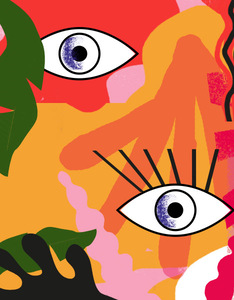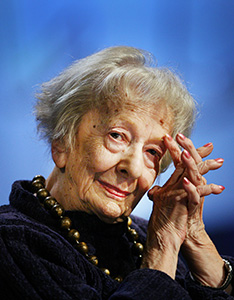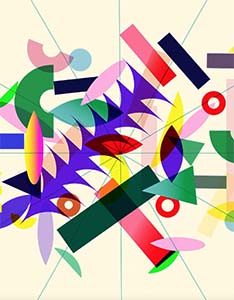Works of Wacław Szpakowski in Riga.
Works of Wacław Szpakowski in Riga.
Wacław Szpakowski's previously unpublished archive will be presented for the first time in Riga at the Latvian National Museum of Art on the anniversary of the artist’s birthday. The exhibition is co-organised by the Adam Mickiewicz Institute.
The exhibition, open between 4.03 - 30.04, is an opportunity to explore Szpakowski's time at university and his personal relationship with Latvia. It features a large selection of artworks, as well as unpublished archival materials – some pioneering, yet not widely known, works of art. The project will provide a coherent framework for the artworks and archival materials, commemorating the 140th birthday and the 50th anniversary of the artist's death.
Wacław Szpakowski wrote about his work:
“These were, in a sense, experiments with straight lines. They did not take place in scientific laboratories, but instead contingently, in various places and at different times, because all this required was a piece of paper and a pencil." […] The linear ideas created in this manner were merely, so to speak, improvisations.”
For more than half a century, Szpakowski did not reveal his drawings to anyone except his family. Eventually, towards the end of his life, he described them in a critical essay entitled “Linie rytmiczne” [Rhythmic Lines].
The design of the exhibition, inspired by Szpakowski's labyrinthine linear compositions, is created by Liva Kreislere, the architect of exhibitions such as “Notes ryski. Śladem linii Wacława Szpakowskiego” [Riga Notebooks]. The exhibition is organized in cooperation with the Latvian Centre for Contemporary Art and the Muzeum Sztuki in Łódź. It is curated by Jakub Gawkowski, Daniel Muzyczuk, and Inga Lāce.
Wacław Szpakowski was born in 1883. When he was 14, his family relocated to Riga. There, he continued education and graduated with a degree in architectural engineering. He also received a musical education and played the violin, during the Riga period, in a student orchestra.
He travelled throughout Latvia, collecting drawings and photographic notes from his travels that focuses on architecture and its ornamental details.
Szpakowski was an architect by education, and worked with photography and drawing, he was the creator of the system of rhythmic lines, a Polish avant-garde artist and a pioneer of geometric abstraction.
The Latvian National Museum of Art [Latvijas Nacionālais mākslas muzejs] is the largest art museum in Latvia.
Muzeum Sztuki in Łódź, founded in 1930, it is one of the oldest existing museums collecting avant-garde art.
Media Contact
Klaudiusz Gomerski
The Adam Mickiewicz Institute is a national cultural institution established in 2000 with the aim of building a lasting interest in Polish culture around the world in cooperation with foreign partners and through international cultural exchange in dialogue with recipients, in line with Polish foreign policy. Over the last 20 years, the Institute has completed projects in over 70 countries on 6 continents. The Adam Mickiewicz Institute is promoted by the Minister of Culture and National Heritage.


